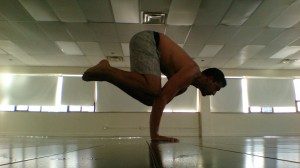Testosterone boosting foods can really maximize your dietary efforts and give you the edge you need during training camp.
1) Oysters: Protein, magnesium, lots of zinc
Along with increasing your physical endurance, oysters pack more zinc than almost any other food source just six gives you almost seven times the RDA and zinc plays a key role in muscle growth and testosterone levels.
How much:
Eat a serving of oysters once a week, raw, cooked or canned but never fried.
2) Lean Meat: Protein, iron, magnesium, zinc, saturated fat
Few things have as positive an impact on testosterone levels as lean meats. Beef specifically offers the added benefit of high protein and zinc two nutrients key to optimizing testosterone and muscle-building potential in one source. And while you don’t want too much saturated fat in your diet, you require some to produce testosterone.
How much:
Grill or broil a lean cut of steak a few times a week. I love Top Sirloin!
3) Rajma (Kidney Beans): Protein, fiber, zinc
Beans are indeed the magical fruit. Beans pack a bigger shot of zinc than any other member of the veggie family; some (like baked beans) even rival the zinc content of red meat. Add that to a food that’s high in protein and fiber and low in fat, and you have winning combos.
How much:
Baked beans, lima beans, navy beans and kidney beans are all good choices. Canned versions are as nutritious as dry!
4) Chicken: Protein and little fat
High-protein diets have a positive impact on muscle mass and thus testosterone levels and high fat seems to have the opposite effect. So while chicken and turkey lack high zinc levels, their protein-to-fat ratios make them important to your diet.
How much:
Roast or grill skinless, boneless portions of chicken several times a week.
5) Eggs: Protein and cholesterol
Testosterone is synthesized from cholesterol, and as such, food containing cholesterol is a good source of building blocks for testosterone. Eggs are a source of pure, unadulterated cholesterol, and one recent study showed that the excess cholesterol in eggs isn’t as harmful as previously thought. So stock up on whole eggs (unless otherwise instructed by your physician). Or use the liquid egg whites!
How much:
Start your day with 3-4 whole eggs cooked in olive oil or fat-free cooking spray. The amount of eggs you eat also depends on your goals, body weight etc.
6) Cottage Cheese: 1% Milk Fat) Protein with very little fat
One cup of 1% cottage cheese has more protein and less fat than a serving of lean meat or chicken. Have it as a snack or with a meal for testosterone-boosting potential.
How much:
Eat 1 cup of cottage cheese each day
7) Broccoli: Indole-3-carbinol, fiber
Elevated estrogen levels lead to fat accumulation and can interfere with muscle growth. In a clinical study, indole-3-carbinol cut the largely female hormone estradiol in half for men. Broccoli contains high levels of indoles, food compounds that help reduce bad estrogen.
How much:
Eat as many servings of broccoli as you can stomach.
8) Cabbage: Indole-3-carbinol, fiber
In addition to exhibiting the same estradiol-restricting properties as other cruciferous vegetables, cabbage is high in fiber. Fiber is great for controlling weight, as it prevents the consumption of fattier foods. Keeping weight down has an anti-estrogen impact.
How much:
Load up that fat-free brat with sauerkraut and have a side of slaw just go easy on the mayo.
9) Dates (Khajur)
Dates are even beneficial for increasing sexual stamina in the human body. A handful of dates, when soaked in fresh goat’s milk for the night and then grinded in the same milk with the mixture of cardamom powder and honey, becomes a very useful tonic for increasing sex endurance and sterility caused due to functional disorders.
How much:
Handful of Khajur in the morning.
10) Garlic: Allicin
In clinical studies, garlic’s active ingredient enhances testosterone levels and inhibits cortisol, a hormone that competes with testosterone, limiting its actions and breaking down muscle tissue.
How much:
Season other foods with garlic when you can, but eating whole cloves provides the most direct benefit.
 On behalf of our team, we welcome you to the Naturelife Rehabilitation Centre webpage. The site has recently been updated and improved to meet the needs of our patients. Our objective was to create an inviting webpage that is both informative and aesthetically pleasing for visitors – we hope it exceeds your expectations!
On behalf of our team, we welcome you to the Naturelife Rehabilitation Centre webpage. The site has recently been updated and improved to meet the needs of our patients. Our objective was to create an inviting webpage that is both informative and aesthetically pleasing for visitors – we hope it exceeds your expectations!



